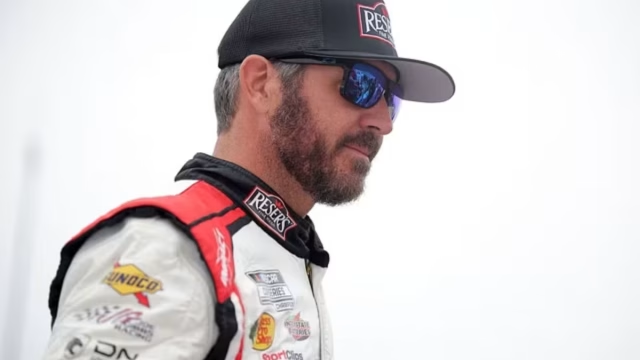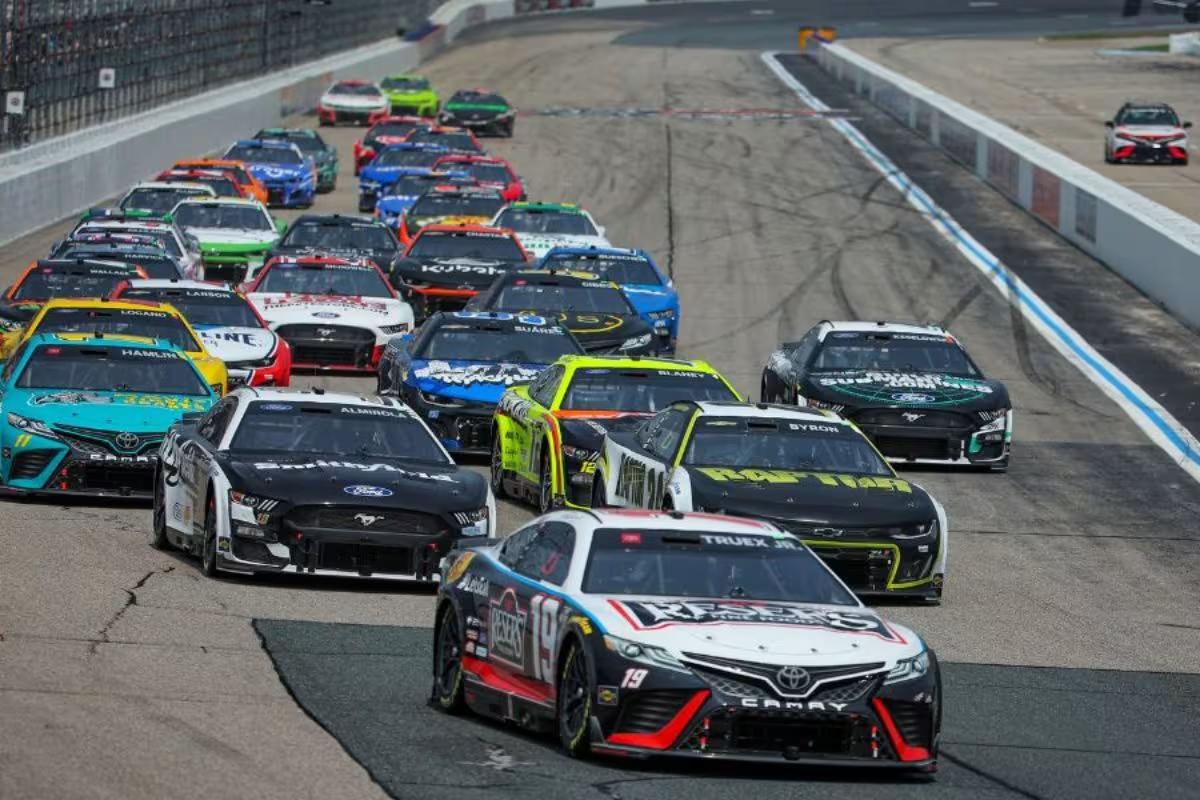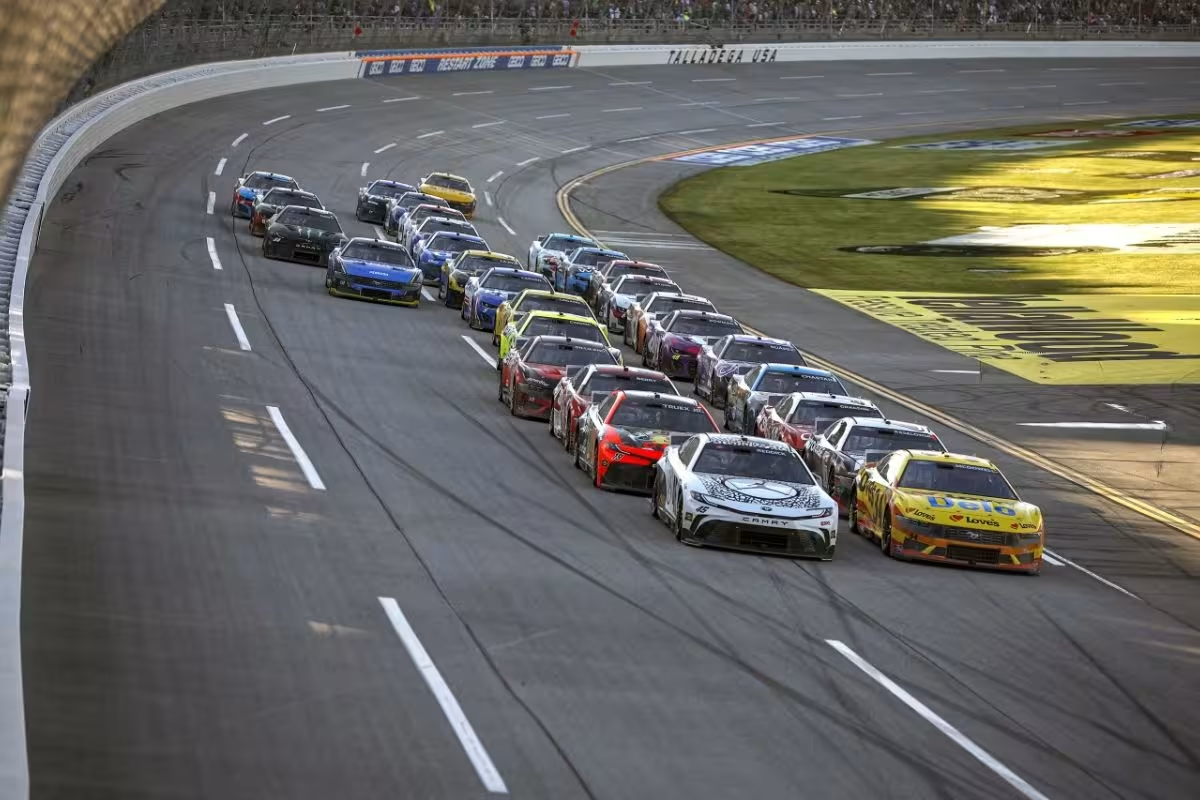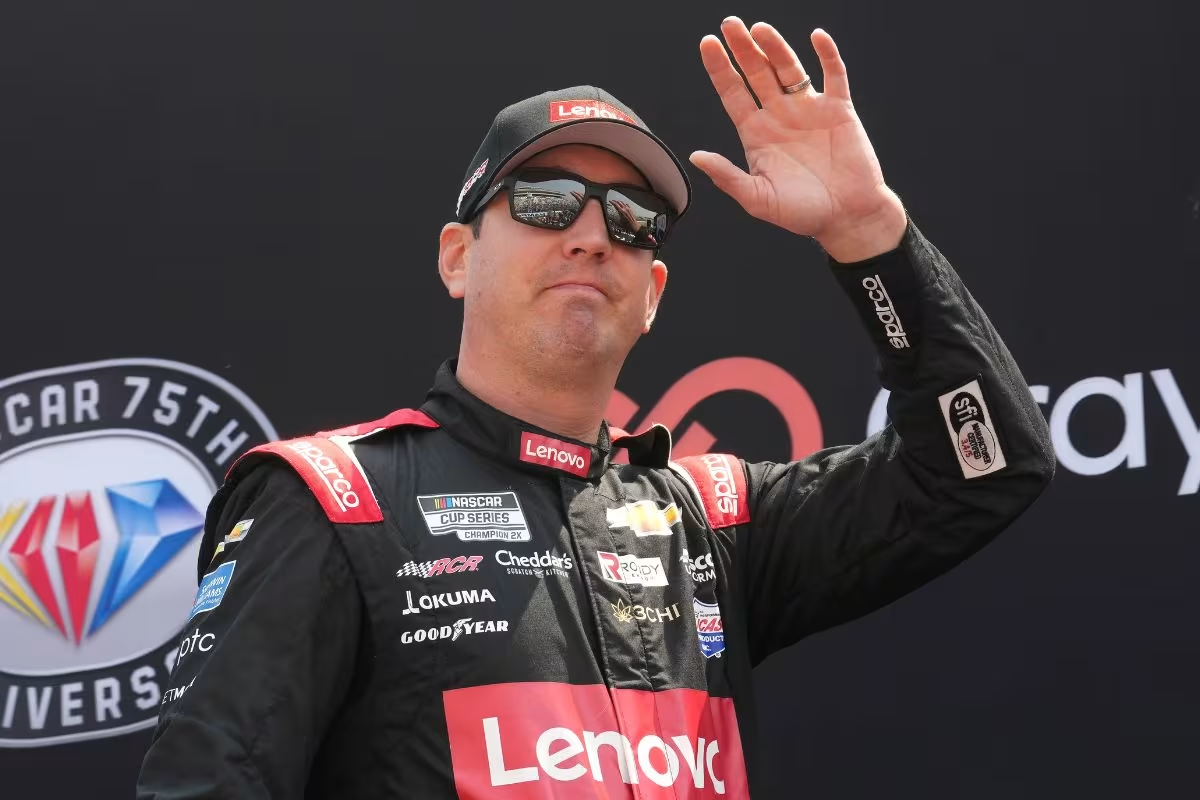Martin Truex Jr. Complains About Charlotte ROVAL Changes: The reconfigured Charlotte ROVAL has turned up the heat for NASCAR’s round of 12 playoffs. With new sharp turns and controversial turtle curbs, the track is now tougher than ever. Drivers like Martin Truex Jr. have faced unexpected challenges, and the changes are causing a stir in the NASCAR community. What’s behind the reconfiguration, and how will it impact the playoff race? Find out how these adjustments are shaking up the competition and what drivers are saying about the new layout!
Key Highlights
- The Charlotte ROVAL’s reconfiguration introduces sharper corners and turtle curbs, complicating navigation for drivers like Martin Truex Jr.
- Truex Jr. has historically struggled at the ROVAL, with his best finish being seventh in 2020.
- The newly added turtle curbs pose safety risks, as cars can launch off them, leading to potential loss of control.
- Truex Jr. faced challenges in qualification, starting the race in 30th position, reflecting ongoing performance struggles.
- The track changes, aimed at enhancing excitement, have raised concerns among drivers regarding safety and competitive dynamics.
Overview of the Charlotte ROVAL Reconfiguration
The recent changes to the Charlotte ROVAL have made the track more challenging for drivers in the NASCAR Cup Series’ round of 12 playoffs. This track is already unique, combining both road course and oval elements, but now it’s even tougher due to some new adjustments aimed at making the race more exciting. One of the biggest changes is the sharper turn seven, which was already tricky for many drivers.
The addition of turtle curbing in this corner has raised concerns about safety. The curbs are meant to stop drivers from trying risky moves by cutting the track limits, but they also make the corner more dangerous. Drivers need to be extremely precise, as any mistake could lead to serious trouble.
During practice and qualifying, it was clear that not everyone liked the new layout. Some experienced drivers were not happy with the changes, saying they might take away from what makes racing at the ROVAL special. This shows the ongoing debate in racing between trying new things and keeping traditions alive.
In the end, the reconfigured Charlotte ROVAL is part of NASCAR’s effort to make the sport more exciting, but it also creates new challenges. Drivers will need to adjust their strategies for this unpredictable track, and these changes are sure to impact the rest of the playoffs.
Martin Truex Jr.’s Reaction and Performance
While Martin Truex Jr. has historically struggled at the Charlotte ROVAL, the recent reconfiguration has added a new layer of challenge that has greatly impacted his performance. Despite a past best finish of seventh in 2020, Truex Jr. entered this year’s race weekend with mixed emotions. The track holds nostalgic value for the 2017 Cup Series champion, who previously dominated the Coca-Cola 600 in 2016 by leading 492 of 500 laps.
Yet, with his forthcoming retirement, this race carries added weight as it marks his last appearance at the ROVAL.
Initially, Truex Jr. expressed enthusiasm during simulator sessions, highlighting the thrill of the new jump feature between turns five and six. However, this excitement rapidly diminished upon experiencing the actual track conditions. The newly sharpened apex in Turn 16, coupled with the implementation of turtle curbs, proved challenging.
“They finally put a jump in one of these tracks for us. I was on the simulator today and you kind of get airborne there going between turn five and that new turn six. So it’s gonna be interesting for sure.” – Truex
Truex Jr. candidly noted, “It feels like you get a concussion every lap, basically, if you hit them. It’s not much fun,” revealing the physical toll these modifications exacted.
Compounding his difficulties was a disappointing qualification, resulting in a starting position of 30th. This placement reflects his struggles with the reconfigured layout and highlights the broader implications of the ROVAL’s new design on driver performance.
Details on Turtle Curbs and Driver Concerns
Concerns surrounding the newly introduced turtle curbs at the Charlotte ROVAL have intensified among drivers, particularly after Martin Truex Jr.’s challenging experience on the reconfigured track.
These six-inch-high plastic curbing elements, referred to as “turtles,” function as raised rumble strips positioned within the chicanes. Their design aims to improve track delineation; however, they pose considerable operational challenges for drivers attempting to navigate the ideal racing line.
During practice and qualifying sessions, drivers reported that their cars were launching off the turtles, raising substantial safety concerns. The raised design effectively acts as a speed bump, and the risk of losing control upon contact is considerable.
This predicament echoes a similar situation observed at Watkins Glen, where drivers expressed apprehension about the bus stop curb. In response, NASCAR implemented smoother curb changes to mitigate the risk of cars becoming airborne.
Brad Keselowski highlighted the parallel between the ROVAL and the earlier configuration at Watkins Glen, stating, “The front stretch chicane (at ROVAL) reminds me of Watkins Glen before they redid it… It doesn’t feel good, no. But I don’t know if it’s supposed to.”
As the season progresses, the implications of the turtle curbs will require careful evaluation by both drivers and NASCAR officials to guarantee safety remains paramount in competitive racing environments.
Kyle Busch’s Perspective and NASCAR’s Intentions
Kyle Busch has voiced his frustrations regarding the recent changes to the Charlotte ROVAL, particularly the tighter chicane configuration. Despite qualifying 11th, Busch expressed concerns over the physical toll these modifications have taken on drivers, stating, “I don’t know when I’ll see the data… my head hurts.” His experience is notable; with a consistent track record, including three consecutive top-five finishes, his perspective warrants attention.
“It’s not overblowing it. It’s 1000% correct.” – Busch
The alterations to the chicane, which were intended to slow cars and create further passing opportunities, have drawn skepticism from Busch. He questions the logic behind tightening the chicane, suggesting that it may hinder rather than improve racing dynamics.
The presence of “turtles” at the sharper corner complicates navigation, as drivers must ramp them skillfully to maintain momentum. Busch’s critique highlights a broader concern among competitors regarding the implications of design changes made on short notice.
“I don’t understand the reasoning behind making it tighter; just to make us slower through there so we don’t get into Turn 1 as fast? I don’t really know. But the turtles over there, the sharper corner, if you don’t ramp them, you miss the exit, you miss the second set of them. You have to ramp them to give yourself a shot to be able to miss the exit ones.” – Busch
NASCAR and Speedway Motorsports executives, including President Marcus Smith, have touted the potential for distinct braking zones to boost competition. However, the effectiveness of these intentions remains uncertain.
“Two distinct braking zones (turn 7 and the chicane in turn 16) are going to really help the competition and provide great overtaking opportunities.” -Smith
As the season progresses, the racing community will be watching closely to see if the newly configured chicane promotes the desired overtaking opportunities or, conversely, becomes a source of frustration and danger for drivers like Busch.
News in Brief: Martin Truex Jr. Complains About Charlotte ROVAL Changes
The reconfiguration of the Charlotte ROVAL introduces notable challenges for competitors, particularly Martin Truex Jr. This new layout, characterized by the installation of turtle curbs, raises concerns regarding driver safety and vehicle performance.
Insights from Kyle Busch highlight the broader implications of these changes within NASCAR’s tactical framework. Such adjustments reflect ongoing efforts to improve competition while addressing safety concerns.
ALSO RAED: Martin Truex Jr.’s Farewell Race at Charlotte Roval—Will He Make It a Victory Lap?



